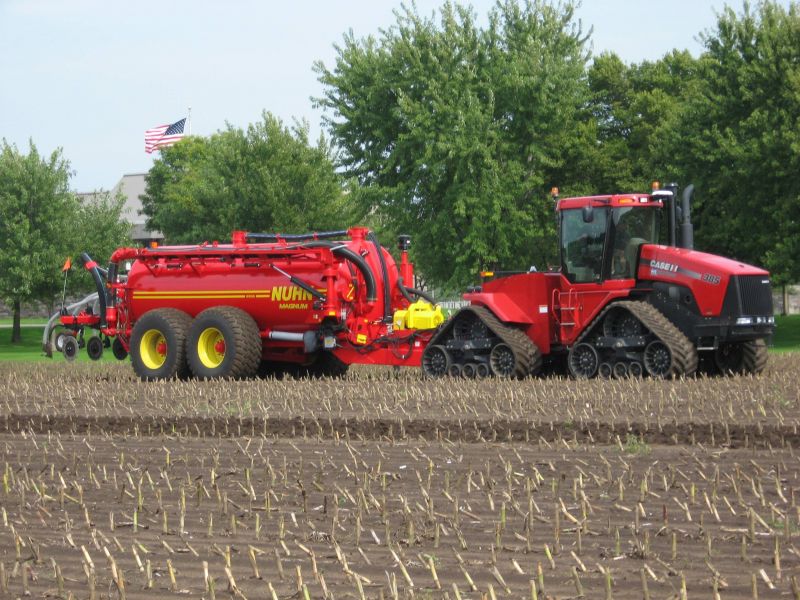Thermal Hydrolysis Process Commissioned as Key Component in Nutrient Recovery/Reuse Project
Published on by Water Network Research, Official research team of The Water Network in Completed Designs
Lystek International is excited to announce that it has successfully commissioned another installment of its low temperature Thermal Hydrolysis Process (Lystek THP®) at the City of St. Cloud, Minnesota, (St. Cloud) as part of the city’s Nutrient Recovery and Reuse (NR2) Project.
The model project was partially funded through a Point Source Implementation Grant made possible by the Minnesota Clean Water Legacy Act. The Lystek system is a key component of the project as it facilitates the recovery of valuable organic matter and nutrients from the city’s wastewater biosolids to create LysteGro® a high value, Class A quality biofertilizer product that will be utilized in the local, agricultural market.

Source: Lystek
Lystek’s portfolio of solutions is based on its multi award-winning process which leverages years of sound science and research to tap into the value of biosolids and organics. Once considered “waste”, these materials are now viewed as recoverable resources for the production of high quality products, such as biofertilizers, green energy and alternative sources of carbon.
“The Lystek system is a key element in the NR2 project and, together with St. Cloud and all stakeholders in this initiative, we are demonstrating both economic and environmental leadership in Minnesota through the implementation of innovative, cost effective solutions,” said Patrick Shea, Public Services Director for the City. “Feedback from our team in terms of the training and professionalism of the Lystek staff on this initiative has been extremely positive and we look forward to seeing this proven system play its part in this important resource recovery project.”
St. Cloud is located in the Mississippi Delta river region and is the largest population center in the state’s central area. The Delta river region is known as the “Dead Zone” because it has been negatively affected by eutrophication due to run-off of nitrogen and phosphorus. The Minnesota Clean Water Legacy Act (CWLA) is an ambitious plan that includes the provision of funding to local organizations for on-the-ground work to protect and restore lakes, rivers and streams and meet state water quality standards.
St. Cloud’s NEW Recovery Facility (Nutrient, Energy, and Water) serves a population of over 120,000 from the city and surrounding communities of St. Augusta, St. Joseph, Sartell, Sauk Rapids, and Waite Park. The plant has a design flow of 17.9 MGD and features a Biological Nutrient Removal system to help eliminate nutrient overloading into the local waterways.
Recycled wastewater contains valuable nutrients and organic matter that keeps soil healthy. Healthy plants and soils are also able to retain more moisture (i.e. water), thereby reducing the risk of run-off and eutrophication which causes algae to grow, destroying aquatic life and resulting in poor water quality. In order to maximize nutrient use by agricultural plant life, while minimizing the potential for run-off (and odors), the LysteGro biofertilizer product is subsurface injected directly into the soil during application.
Funding for this project also includes the installation of Ostara, another Canadian technology that is leading the way in struvite avoidance and phosphorus recovery in the wastewater sector, and the installation of biofuel storage to help optimize the fuel produced for the biofuel generator and reduced energy costs.
“It is truly inspirational to be part of a project like this,” says Rick Mosher, CTO of Lystek. “It shows what can be accomplished when the opportunity arises to work with visionary leaders and a collaborative team. It also demonstrates that it is possible to protect our natural resources while balancing this need with responsible, economic development. When we work together toward this goal, we can achieve true, long-term, sustainability“, Mr. Mosher adds.
Source: Lystek
Media
Taxonomy
- Agriculture
- Fertilizers
- Sustainable Agriculture
- Wastewater Disposal
- Wastewater Use
- Agricultural
- Wastewater Treatment Plant Design
- Agriculture